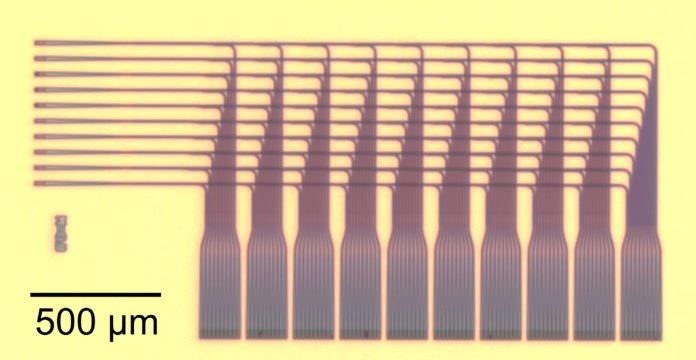Using AI, many researchers are trying to emulate the brain by creating circuits of artificial neural networks. But the problem lies in conventional electronics, for example, electrical wiring of semiconductor circuits often obstruct complex routing required for using neural networks.
Now, scientists at the National Institute of Standards and Technology (NIST) have come up with an idea of modeling a silicon chip that distributes optical signals precisely across a miniature brain-like grid, showcasing a potential new design for neural networks.
Instead of wiring, scientists here used light for signaling route. Scientists expect that using light could vanish interference and thus lead to a faster signal travel.
NIST physicist Jeff Chiles said, “Light’s advantages could improve the performance of neural nets for scientific data analysis such as searches for Earth-like planets and quantum information science, and accelerate the development of highly intuitive control systems for autonomous vehicles.”
The chip conquers a noteworthy challenge to the utilization of light signals by vertically stacking two layers of photonic waveguides—structures that keep light into thin lines for routing optical signals. This three-dimensional (3D) design enables complex routing schemes, which are necessary to mimic neural systems. Furthermore, this design can easily be extended to incorporate additional waveguiding layers when needed for more complex networks.
These photonic waveguides made from silicon nitride of size 800 nanometers (nm) wide and 400 nm thick. They form a 3D grid with 10 inputs or “upstream” neurons each connecting to 10 outputs or “downstream” neurons, for a total of 100 receivers.
For automated signal routing, scientists have demonstrated a software that adjusts the levels of connectivity between the neurons.
Power levels represent the pattern and degree of connectivity in the circuit. The authors demonstrated two schemes for controlling output intensity: uniform (each output receives the same power) and a “bell curve” distribution (in which middle neurons receive the most power, while peripheral neurons receive less).
During an experiment, scientists created the images of output signals. All signals were focused through a microscope lens onto a semiconductor sensor and processed into image frames. This method allows many devices to be analyzed at the same time with high precision. The output was highly uniform, with low error rates, confirming precise power distribution.
Other co-authors of the study include J. Chiles, S.M. Buckley, S.W. Nam, R.P. Mirin and J. M. Shainline. The study is published in the journal APL Photonics.
